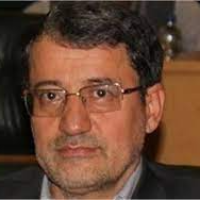A review on verses which Tabarsi has not considered their diacritical aspect when interpreting their meaning
Author(s):
Article Type:
Research/Original Article (دارای رتبه معتبر)
Abstract:
Interpreters have emphasize the necessity of knowing Erab (Diacritic) and syntax in the Holy Quran and none of them has been doubtful in the significance of the role of Erab in interpreting. Tabarsi in his interpretation book has exerted his efforts in delineating Erab and after mentioning verses for interpreting, firstly explains lexical elements and then, discusses their Erab. The significance of Erab can be argued as follows: Erab is the greatest quranic knowledge because each meaning is based on Erab and it is Erab which can explicate words and their semantic relations. Because intentions are hidden in words and Erab can explicate, reveal, discus and guide them. In addition, Erab is a criterion by which the deficits and superiority of words can be revealed and it is a cornerstone for evaluating the goodness and badness of words (Tabarsi, 2005, vol. 1: 5). Tabarsi, in his interpretation, investigates the issue in two sections of Erab and reading and allocates a section to expressing meaning. In the present study, the issue of the effect of different forms of Erab in the mentioned sense, and the issue of the effect of Erab in meaning were investigated. Therefore, in the present study, it has been tried that different forms of Erab in the Holy Quran can be extracted and then, their meanings can be mentioned in places where Tabarsi has been neglected. Afterwards, according to the mentioned syntactic information, this issue can be investigated that those Erab forms are related to which meaning. In most of parts, only ideas of other scholars other than Tabarsi are mentioned.
Language:
Arabic
Published:
Research in Arabic Language and Literature, Volume:7 Issue: 2, 2016
Pages:
42 to 60
https://www.magiran.com/p1577143
سامانه نویسندگان
مقالات دیگری از این نویسنده (گان)
-
Structural analysis and meaning of the Tafzil name in the translation of Ten Hikmat from Nahjal-Balagha
Leila Ghanbari*, Fatemeh Ghaderi, saedreza Soleymanzadeh Najafi
Biannual Journal Current Studies in Nahj al-Balaghah, -
Comparative Participle Usage in Nahj Al-Blaqah Letters and Recognition of Existing Manuscript Calligraphy (Case Study: Dehnameh)
Leila Ghanbari, Fatemeh Ghaderi *, Mohammadali Salmani Merost, Seyyed Reza Suleimanzadeh Najafi
Islamic Art Studies,



